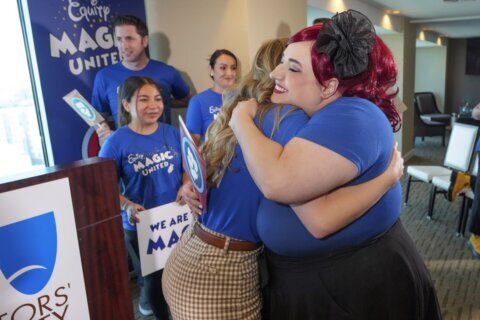With beach season in full swing, researchers unveiled a report that showed roughly 55% of U.S. beaches had at least one day of potentially unsafe contamination levels last year.
“The places we love to go and swim and play in the water are not always as clean and as safe as we’d like them to be,” said John Rumpler, clean water program director for Environment America Research and Policy Center.
Rumpler’s team pored over pages of tests conducted by the Environmental Protection Agency, in which each beach was given a Beach Action Value (BAV) — a score the EPA uses to put out safety advisories or closings based on bacteria levels in the water.
On unsafe days, the EPA estimated that the high pollution levels could cause illness at a rate of 32 people out of every 1,000 swimmers. Environment America scientists discovered that at the 3,192 beaches the EPA tested last year, more than 1,750 had at least one day on which fecal contamination had high scores.
“Whether it’s animal waste or human waste, it contains viruses and other stuff that can make us sick. You don’t have to be a scientist to know that we shouldn’t be swimming in poopy water,” Rumpler said.
Researchers also estimate that every year 57 million cases of illness across the country are linked to swimming in unsafe bodies of waters, including oceans, lakes, rivers and ponds.
The vast majority of these illnesses, which include nausea, skin rashes and eye and ear infections go unreported, the study said.
The advocacy group also tracked which regions saw the most dirty beach days in 2022. Beaches on the Gulf Coast fared the worst, with unsafe waters on 84% of its test days.
West Coast beaches had unsafe waters on 70% of its test days, followed by Great Lakes at 70%, East Coast at 48% and Alaska and Hawaii at 24%.
Rumpler said the pollution is coming from a handful of known culprits. Sprawling development, outdated and leaky sewage systems and runoff from factory farming are mostly to blame.
But there is something beachgoers can do to protect themselves before their beach outing and improve waterways in the future.
“I would suggest that they look and see if their favorite beach offers real-time, online beach advisories to tell you what the beach is like on the day they want to go,” Rumpler said. “The second thing is to contact their elected officials and tell them to continue repairing our sewage infrastructure.”
For more information about the most contaminated beaches in Maryland and Virginia, head to Environment America’s website.







